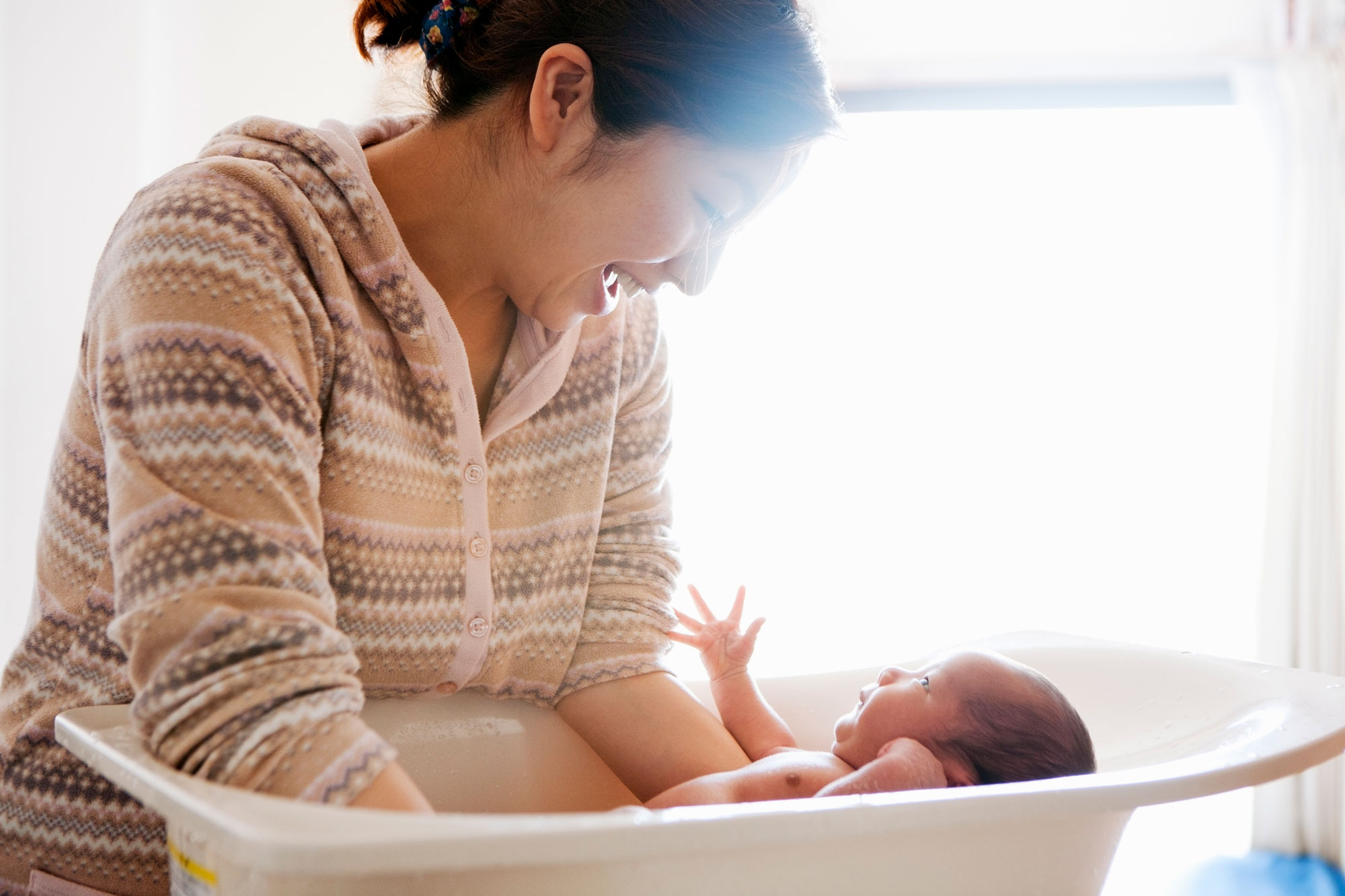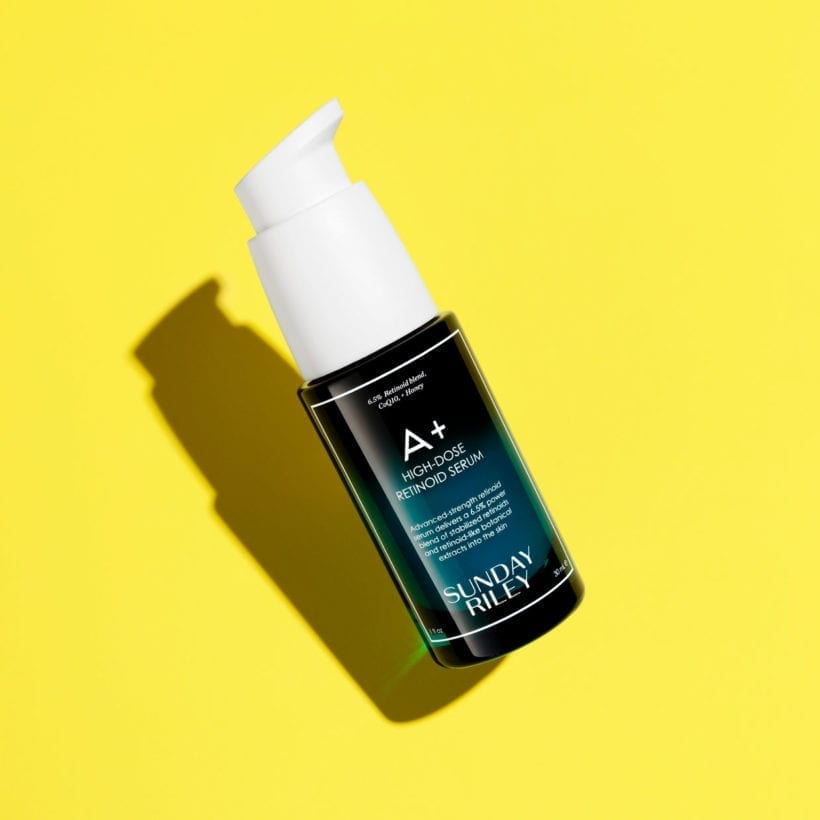As soon as I started puberty at the ripe age of 10 (yep, 10!), I started having breakouts. My acne peaked in my teens and early 20s, and I finally decided to see a dermatologist. After some convincing, I went through the intense experience of Accutane, a potent prescription vitamin A derivative that battles severe cystic acne. Accutane nearly removed all of my breakouts for the better part of seven years. I had a few flare-ups around my menstrual cycle, but otherwise, I enjoyed a clearer complexion.
Accutane treatment undoubtedly worked, but it was taxing what it could do to your body. In fact, in addition to showing two negative pregnancy tests before getting prescribed Accutane, doctors require women to be on two forms of birth control because of the extreme risk of congenital disabilities. Plus, you have to get monthly blood testing and you can only stay on Accutane for six to eight months at a time. I also experienced extreme skin dryness to the point where my skin was peeling.
So, when my skin started flaring up during pregnancy and in the months after having my daughter, I knew Accutane wasn’t an option. Though I’m not actively trying to get pregnant again, I’m also no longer using birth control, and I don’t want something dangerous in my bloodstream, just in case we do have a surprise. That being said — I hated taking selfies with my beautiful, sweet newborn when my face was red, inflamed, and displaying oversized cysts.
Meet the Experts
Melanie Palm, M.D., is a board-certified dermatologist at Art of Skin MD.
Steve Xu, M.D., is a founding dermatologist at Geologie.
Finally, after I woke up from the haze of the fourth trimester, I booked an appointment with my dermatologist. Her first recommendation was an oral prescription medicine called spironolactone. While it’s technically a diuretic that treats high blood pressure, doctors have prescribed it off-label to help women with hormonal acne.
Did it work for me? Here, more about this seemingly more about this medication and my personal experience.
First, what is hormonal acne?
Much like it sounds, hormonal acne is caused by fluctuations or imbalances in your hormones, says Melanie Palm, M.D., a board-certified dermatologist at Art of Skin MD. Generally speaking, Dr. Palm says this specific form of acne is especially common in women, who experience more hormonal fluctuations than men due to menstruation, pregnancy, menopause, puberty, or health conditions like PCOS (polycystic ovarian syndrome).
“Many adult females, some of whom never had acne, may suddenly develop deep, cystic acne that appears cyclically, usually right before or during the start of their period,” she explains. “Hormonal acne can also show up as whiteheads and blackheads. These hormonal breakouts are typically seen on the cheeks, jawline, and neck.”
For me, the vast majority of my acne appeared on my jawline and my cheeks. I didn’t experience any neck or forehead breakouts, but after having my daughter, the lower half of my face was riddled with painful cysts. Though frustrating, it’s not abnormal, particularly as your hormones balance out post-pregnancy.

What is spironolactone?
As defined by Dr. Palm, spironolactone is a potassium-sparing diuretic taken orally. “Its first use in medicine was as a high blood pressure medication; however, it also acts as an anti-androgen that prevents the body from overstimulating the oil glands and is extremely effective in adult and adolescent female hormonal acne,” she explains.
Studies recommend it as the first line of therapy for teenagers and adult women suffering from inflammatory or hormonal acne. “When treating patients with hormonal acne, spironolactone is my favorite treatment to use alone or in combination with other treatments — especially since it is extremely effective and safe,” Dr. Palm says.
As someone who is pro-science and believes in expert opinion, I was a bit surprised by my hesitation to try spironolactone. Since I hadn’t been on a prescription medicine since Accutane nearly a decade ago, I wasn’t keen on having something to take daily. I was worried I’d experience the same issues — like extreme dryness — with this medicine. So, I first tried a prescription topical vitamin A for a month. When that didn’t work, I decided to give spironolactone a chance. My dermatologist reassured me it wasn’t even close to the difficult experience of Accutane — and she was right.
What’s it like taking spironolactone?
I spoke with Dr. Palm about the pros and considerations of using this oral medication for hormonal acne — and also shared my experience, too:
It’s safe.
When you’re taking anything, having the reassurance that it’s generally considered a safe medication is vital. Dr. Palm says the drug has been around for over 50 years, has been clinically tested and reviewed many times, and has a proven track record. However, those trying to conceive, currently pregnant or breastfeeding, shouldn’t take spironolactone. My daughter is formula-fed, and I asked my doctor what would happen if I became unexpectedly pregnant while taking the medication.
She said should I see a positive pregnancy test or if my husband and I decide to try actively, I should immediately go off spironolactone to lower the risk of congenital disabilities. Since we are still more than a year from trying to conceive and I track my ovulation, I feel comfortable taking it… for now. However, I do plan to stop a month or so before we begin trying. With Accutane, it is recommended that you do not get pregnant for three months even after you finish the treatment — it wasn’t a risk I was comfortable taking. With spironolactone, you could get pregnant even while on it and you’ll be fine, but you should stop as soon as you learn you’re pregnant.
@marissacstahl Replying to @kendallhorning Spironolactone 101! #acne #cysticacne #hormonalacne #acnetreatment #cysticacnetreatment #acnetips #spironolactone #spironolactonejourney ♬ She Share Story (for Vlog) – 山口夕依
It works.
Steve Xu, M.D., a founding dermatologist at Geologie, says spironolactone is not only effective — but it’s okay for everyday use. “Spironolactone targets the hormonal drivers of acne whereas antibiotics and other topical products do not,” he says. “It’s also safe for long-term use, as the everyday side effects of spironolactone are minimal.”
As for effectiveness, Dr. Palm says it can significantly improve cystic acne caused by a hormonal component by leveling out a woman’s estrogen levels. “In fact, most people with hormonal acne see a 50 to 100 percent reduction in acne after taking spironolactone,” she continues. “Spironolactone can also help to decrease oil production, which also helps decrease the likelihood of future breakouts.”
It’s not for everyone.
Sounds great, right? It is, but it’s sadly not for every person. As Dr. Palm says, women with a history of low blood pressure or strong history of breast cancer may not be good candidates for spironolactone. Also, women over 45 should have their potassium levels checked annually if taking spironolactone. Since spironolactone lowers testosterone, it’s not recommended for men.
My results with spironolactone
My doctor warned me I might have mild side effects — like breast tenderness, fatigue, nausea, diarrhea, or spotting between my periods. She prescribed me 50mg for one week to see how my body would respond. If I could easily tolerate that dose without side effects, she prescribed moving the dosage to 100mg. The first seven days were just fine, so I moved up my dosage, and I’ve been taking it daily for 2.5 months. So far, my symptoms have been incredibly mild. My breasts haven’t been more sensitive than normal, and I haven’t had any abnormal spotting or fatigue beyond the exhaustion that is having a 7.5-month-old.
The only uncomfortable side effect has been a few bouts of diarrhea, usually 30 minutes to an hour after taking the medication. My upset stomach was more likely to happen when I took the pills at lunchtime, so I switched to taking them with my dinner. Now, my body is used to the treatment and it hasn’t happened in more than four months. I also have experienced some dizziness, but I’m not sure if that can be attributed to spironolactone or my need to drink a bit more water.
As for results, they’ve been slow — but noticeable. And according to Dr. Palm, Dr. Xu, and my own doctor, spironolactone isn’t an overnight miracle drug. Dr. Palm says it will take at least three months to begin seeing significant progress, and most of the time, you’ll still need to combine other approaches, too. “Throughout this process, you may need to work closely with your dermatologist or physician to dial in the correct dose,” she says. “Coupling this treatment with other traditional treatments for acne, like using retinoids, red light therapy, microneedling, or lasers, can help to speed up this process.”
I’ve used the same face wash and moisturizer since I was 16. Now, I’m also currently using Sunday Riley C.E.O. 15% Vitamin C Brightening Serum, plus the same prescription retinol/vitamin A I used before beginning spironolactone to help support my skin during the occasional breakouts. The size of my cysts are much smaller and easier to camouflage with makeup, and they’re only on the right side of my jawline and only around my period. Otherwise, the texture of my skin has significantly improved.
Would I recommend spironolactone? Definitely. As a new mom, you have enough to worry about — wake windows, bowel movements, bedtime routine, crawling, you name it — and taking the stress of breakouts off the table has helped boost my self-confidence. My only advice is if you have a sensitive tummy like me … stick close to a bathroom after taking medicine, just in case.
We only recommend products we have independently researched, tested, and loved. If you purchase a product found through our links, Sunday Edit may earn an affiliate commission.










